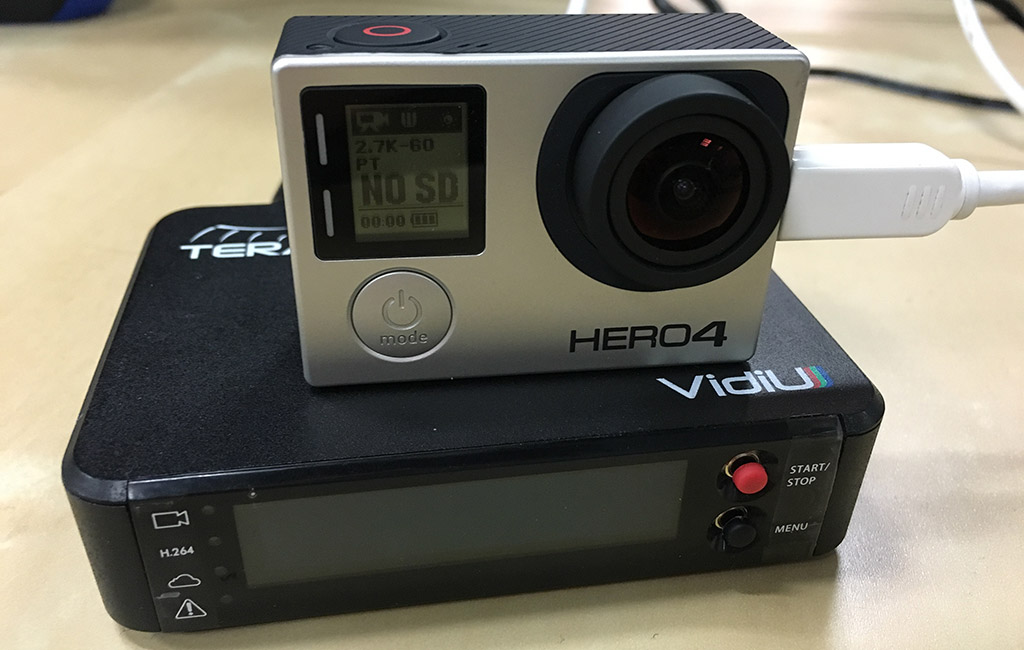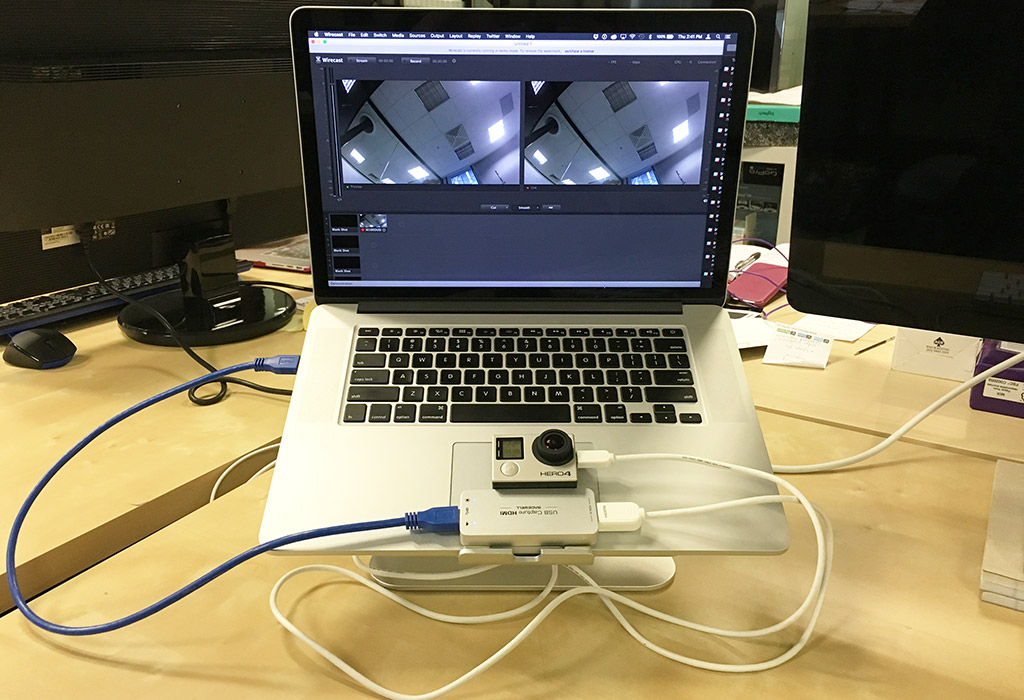
Software vs Hardware Encoders: The Most Portable Solutions
In this post, we’ll examine the two most portable Software and Hardware Encoders for live streaming. As with any streaming event, you need to examine your requirements in order to work out the best camera setup.
For the purpose of our post, we limited our requirements to a single HDMI output camera, which in this case was a GoPro. The complete setup required as small a footprint as possible.
Hardware Encoder Setup
Equipment:
- 1x Teradek VidiU.
- 1x GoPro.
Pros:
- Extremely small footprint.
- VidiU has an inbuilt rechargeable battery.
- Can set and forget.
- Hardly any messy cables.
- Mobile app to setup the encoder.
Cons:
- No video mixing or overlay graphics.
- Can only take the video input of one camera.
Our Thoughts:
In terms of size, this is about as small and portable as it will get for a live streaming solution. The main downside is the lack of video mixing, as it’s just broadcasting the unedited video feed straight from the GoPro. It really comes down to your event requirements and if a straight video feed will suffice, using the Teradek VidiU and GoPro is an easy option.
Software Encoder Setup
Equipment:
- 1x GoPro.
- 1x Magewell USB Capture HDMI (HDMI to USB Dongle).
- 1x Laptop.
- 1x Wirecast software encoder.
Pros:
- Can use any software encoder you want.
- Can add title cards, and play pre-recorded videos.
- If desired, you can add additional camera feeds, with additional HDMI to USB dongles.
Cons:
- Requires more advanced knowledge of live streaming.
- Requires a dedicated computer to run the software.
Our Thoughts:
This is almost the simplest software encoder setup you can get. The next step down is to live stream directly from the laptop’s webcam though in that case the quality of the video will be severely diminished. This setup is perfect for users who want to edit their live streams and include intro graphics, title cards, transitions etc. To add additional cameras you will need another HDMI to USB capture card.
Closing Thoughts
Overall the Teradek VidiU has the smallest footprint. However, it lacks the editing capabilities of the Wirecast laptop setup. At the end of the day, both of these streaming setups have merit depending on the needs of the event you want to live stream.
Links
Software: Wirecast (Software Encoder)
Hardware: VidiU (Hardware Encoder), Magewell USB Capture HDMI (HDMI to USB Dongle)



Jp
Hi guys, good article. I have a quick question, I am planning to do a website for my television station to display the video love. . If I buy the VdiU, what other things do I will need?
Cameron
Hi Jp,
If you have the ability to output the TV station’s video feed via HDMI then the Vidiu will work. However, if you can only output in SDI, then you’ll need an encoder with SDI input, which in Terradek’s case would be the Cube.
Cheers,
Cameron
Sandy Audio Visual LLC
Very interesting and expensive ways to accomplish your stated goal: to have a streaming solutions as portable as possible.
You’ll find the best way to accomplish this goal is with a device that has a camera, computer, and radio all in one: in other words a smart phone. There are too many smart phones on the market that can do this with aplomb to mention in comments, and almost as many mobile-based streaming apps to match, but in general an iOS or Android phone with a data plan and you have the smallest setup that it both practical and good quality.
Cameron
Hey there,
For the purpose of this post our requirements were limited to the use of a single HDMI camera, which is why we didn’t mention smartphones.
Whilst a smartphone in most cases will offer the most portable solution, the quality of the output just doesn’t compare to almost any external camera setup. Having said that, it once again comes down to your project requirements, and if video quality isn’t as much of a priority as portability, then a smartphone will most likely suffice.
Cheers,
Cameron